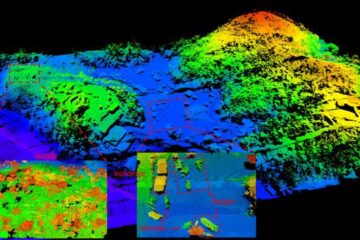Link Discovered Between Earth’s Ocean Currents

Scientists have discovered a striking similarity between certain ocean currents on Earth and the bands that characterize the surface of large, gaseous planets like Jupiter. Boris Galperin of the University of South Florida’s College of Marine Science in Saint Petersburg and colleagues in the United States, Israel, and Japan report their findings later this month in Geophysical Research Letters, published by the American Geophysical Union.
“The banded structure of Jupiter has long been a subject of fascination and intensive research,” says Galperin, a physical oceanographer who analyzes turbulence theory and applies theory and numerical modeling to analyze planetary processes. “The visible bands on Jupiter are formed by clouds moving along a stable set of alternating flows.”
Galperin and his colleagues have discovered that oceans on Earth also harbor stable alternating bands of current that, when modeled, are similar to the bands on Jupiter, due to the same kinds of “jets.” “We think this resemblance is more than just visual,” says Galperin. “The energy spectrum of the oceanic jets obeys a power law that fits the spectra of zonal flows on the outer planets.”
The observation begs the question of whether these similar phenomena are rooted in similar physical forces. “To answer this question,” says Galperin, “one needs to determine what physical processes govern the large-scale dynamics in both systems.”
According to Galperin, there is a similarity in the forcing agents for planetary and oceanic circulations. The study maintains that both sets of zonal jets — the ocean’s bands of currents and the bands of Jupiter’s clouds — are the result of an underlying turbulent flow regime common in nature.
Comparing the energy spectra on giant planets and in Earth’s oceans can yield valuable information about the transport properties of the oceans, says Galperin, especially about the strongest currents in the mid-depth ocean. “The implications of these findings for climate research on Earth and the designs of future outer space observational studies are important,” he says.
The study was funded by the U.S. Army Research Office and the Israel Science Foundation.
Media Contact
All latest news from the category: Earth Sciences
Earth Sciences (also referred to as Geosciences), which deals with basic issues surrounding our planet, plays a vital role in the area of energy and raw materials supply.
Earth Sciences comprises subjects such as geology, geography, geological informatics, paleontology, mineralogy, petrography, crystallography, geophysics, geodesy, glaciology, cartography, photogrammetry, meteorology and seismology, early-warning systems, earthquake research and polar research.
Newest articles

A universal framework for spatial biology
SpatialData is a freely accessible tool to unify and integrate data from different omics technologies accounting for spatial information, which can provide holistic insights into health and disease. Biological processes…

How complex biological processes arise
A $20 million grant from the U.S. National Science Foundation (NSF) will support the establishment and operation of the National Synthesis Center for Emergence in the Molecular and Cellular Sciences (NCEMS) at…

Airborne single-photon lidar system achieves high-resolution 3D imaging
Compact, low-power system opens doors for photon-efficient drone and satellite-based environmental monitoring and mapping. Researchers have developed a compact and lightweight single-photon airborne lidar system that can acquire high-resolution 3D…





















